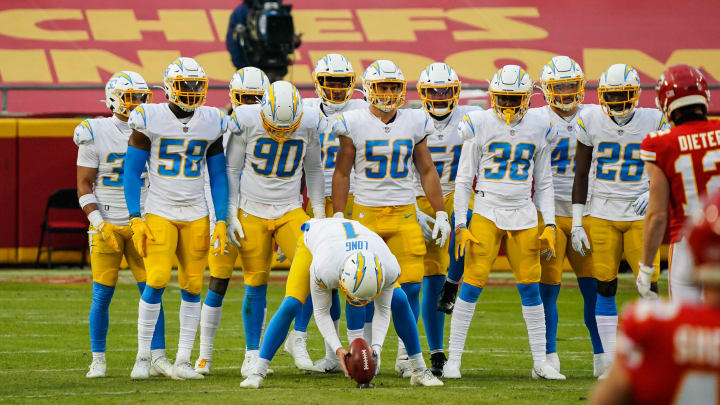Explaining the New NFL Kickoff Rules Heading Into the 2024 Season

- Arizona Cardinals
- Atlanta Falcons
- Baltimore Ravens
- Buffalo Bills | News, Scores, Schedules & Standings
- Carolina Panthers
- Cincinnati Bengals
- Chicago Bears
- Dallas Cowboys | News, Scores, Schedules & Standings
- Cleveland Browns
- Denver Broncos
- Detroit Lions
- Green Bay Packers
- Houston Texans
- Indianapolis Colts
- Jacksonville Jaguars
- Kansas City Chiefs
- Las Vegas Raiders
- Los Angeles Chargers
- Los Angeles Rams
- Miami Dolphins
- Minnesota Vikings
- New England Patriots
- New Orleans Saints
- New York Giants
- New York Jets
- Philadelphia Eagles
- Pittsburgh Steelers
- San Francisco 49ers
- Seattle Seahawks
- Tampa Bay Buccaneers
- Tennessee Titans
- Washington Commanders
A new NFL season is approaching and with it, as always, will come a few rule changes as the league tries to fine-tune the game for the benefit of fans and players alike. The 2024 campaign will bring the most significant on-field change in a long time, though, as new kickoff rules will be introduced beginning in the Aug. 1 Hall of Fame preseason game—the "dynamic kickoff" rules.
As a result of these changes, the kickoffs themselves will look fundamentally quite different from what the viewing audience is used to. Here's what you need to know to understand how these new kickoffs work and the impact they'll have on the game as we know it.
What are the new NFL kickoff rules?
There are a myriad of changes to the kickoff as we know it. Here, we'll break down all aspects.
To start, though, we'll address the one thing that didn't change: where the kickoff takes place. As has been the case for years now, the kickoff team will tee up the ball at their own 35-yard line to kick. Once the football is in the air is when the changes start to be felt.
The kickoff team is no longer allowed to begin to run as soon as the ball is kicked. Instead, they can only begin running down the field once the ball is caught by a returner or hits the ground. This will give the return team significantly more time to get a head of steam and organize their return formations.
Where the ball lands determines the next steps. Is it inside the landing zone, or outside?
What is the landing zone?
This is the piece of terminology that will be thrown around the most during broadcasts and potentially be confusing for viewers.
The "landing zone" is the new name for the area between the goal line and the 20-yard line on kickoffs. Any kick that lands short of the 20-yard line is treated like a ball kicked out of bounds, and the receiving team gets possession at the 40-yard line. Kicks that land in the end zone are treated similarly to how they were previously—the return team can either down the ball and get possession at the 30-yard line or return it. Additionally, kickoffs that go out the back of the end zone are treated as a touchback and result in possession at the 30-yard line.
Kicks that land in the landing zone must be returned by the kicking team. If the kickoff lands in the landing zone and bounces into the end zone, the receiving team can down it and receive possession at the 20-yard line.
All that means the kicking team is very much incentivized to kick as close to the goal line as possible. They'd rather have a chance to tackle the returner instead of gifting the ball to the other team at the 30-yard line and get 10 yards back if the ball bounces into the end zone and it results in a touchback.
In other words, a return is always in the best interest of the kicking team, which means more action for the fans, and the new rules about when the kickoff team can start running should help lessen the number of full-speed collisions that lead to injury.
Now you may understand why this is a significant change. The league has essentially engineered a way for more returns to happen in the flow of the game and there must be strategic adjustments for both sides.
If you are more of a visual learner, here's a video the NFL released to explain it.
The new Dynamic Kickoff rule is going into action tonight at the @ProFootballHOF Game.
— NFL (@NFL) August 1, 2024
Before you see it, get a full breakdown of the new play, the coaches who helped shape the rules and how it was integrated into #Madden25. @EAMaddenNFL pic.twitter.com/gkRXePPpN4
What about onside kicks?
You may have also seen that the new rule changes affect onside kicks.
Onside kicks are now only permitted to occur in the fourth quarter. The team planning to onside kick must declare their intention to officials, and only a team trailing is allowed to declare for an onside kick.
Otherwise, though, current onside kick rules apply.
